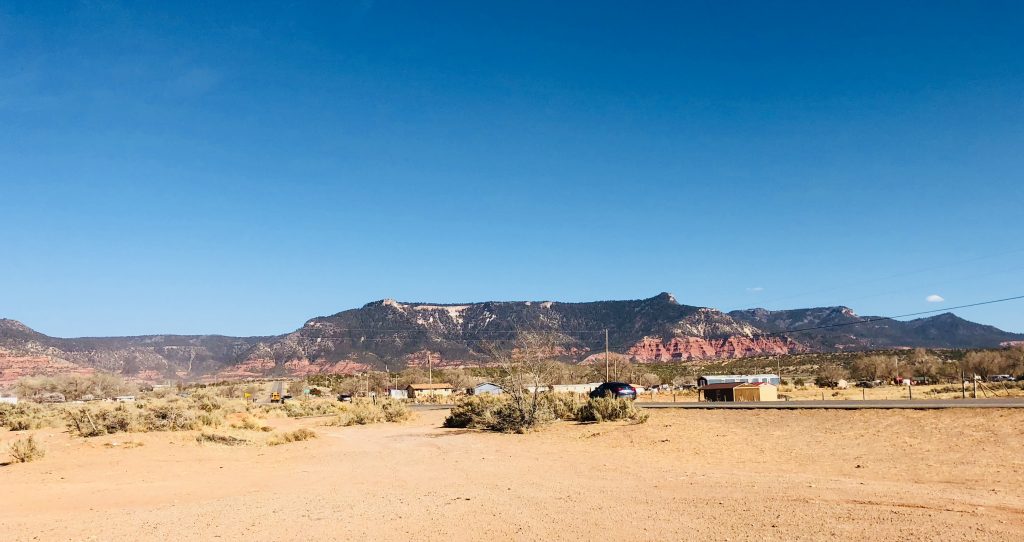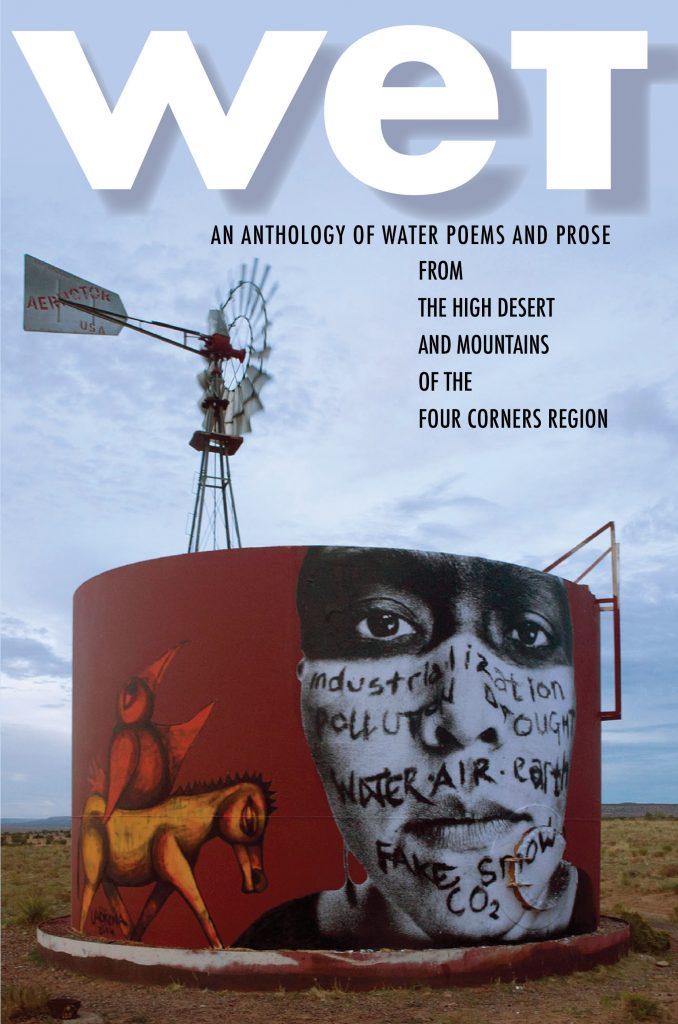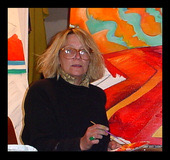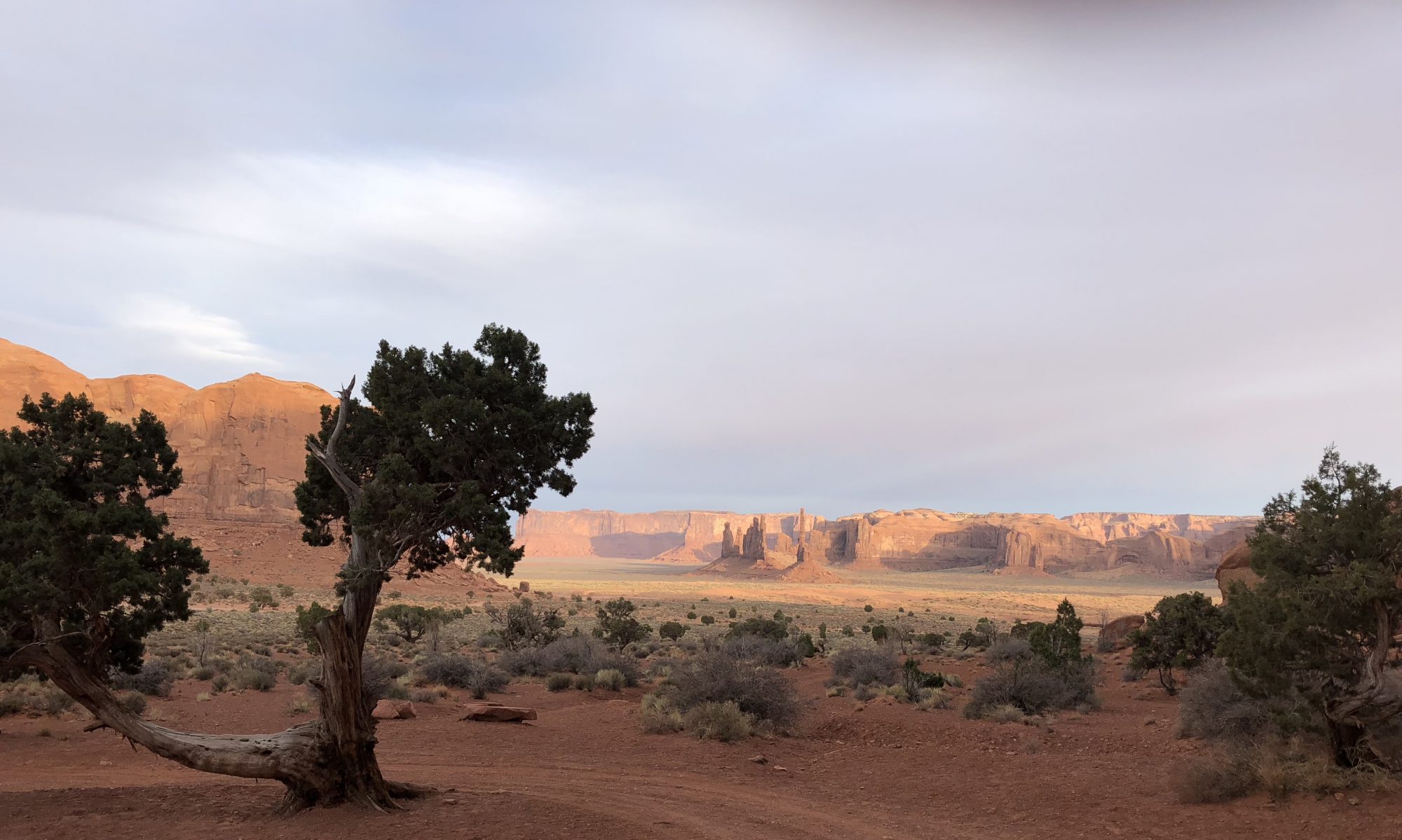
Back in the pre-COVID days of 2018, I reveled in an Easter Sunday feast in Cortez, CO at the home of artist and writer Sonja Horoshko and artist and activist Ed Singer.
We were a motley crew of seven that Sonja and Ed had tightly gathered around their small table set next to the kitchen stove. Sonja is Arctic Swedish/Ukrainian; Ed is Navajo, Diné; myself, my accompanying sister and niece a Jewish soup of Russian, Polish and Austro-Hungarian flavors. There was a Zuñi international activist and a WASP all-around uber mensch with American lineage dating back to the Mayflower. Wine flowed and chatter with bursts of activity rippled through the evening. We’d each entered the scene from our various corners of the universe and left in a wave composed of kindred spirits.
Cortez, CO . . . one small town situated near Mesa Verde in the American high desert, a town with so many stories, so much history, and so many unique and indelible characters. . . . Now, Cortez’s homegrown and appropriately named Sharehouse Press has released a new book that brings a commingling of voices from a panoply of cultures. These voices (in five first languages!) flow together linked by one unifying theme: Water.

WET: An Anthology of Water Poems and Prose from the High Desert and Mountains of the Four Corners Region (Sharehouse Press, 2021, $21.95), was edited by Sonja Horoshko, Renee Podunovich, Michael Thompson, Gail Binkly and Laurie Hall. The book—the first in a planned series centered around the elements water, earth, fire and air—brings together thirty writers who were asked to look deeply into the experience of water as a living entity.
Sonja states, “We asked the writers to put aside settlement papers, policies, water shares and the tally of straws in the Colorado River. And then we asked them to speak love to water instead.”

Represented are writers and poets who together create in Diné; Mvskoke,Creek; Haak’u, Acoma, Spanish and English languages. In some cases, English translations are offered within the body of a poem or story. In other entries, a translation follows as standalone writing. Indigenous contributors weave their first languages naturally into the fabric of English writings.
Says Native American Literary Liaison Michael Thompson, a Mvskoke writer and educator: “ . . . Commitment to our environment, to diversity of representation . . . made this publication a reality. This is what advocacy should be. This is art. This is community voice.”
WET celebrates water’s primordial gifts, and acknowledging those gifts becomes ever more unifying when we ponder that it is water from which we spring, and water which sustains us all.
The examples below represent only a small pool of the water-inspired works of writers who, as Sonja Horoshko states, were brought “to the edge of the well.” At that edge, they delved deep into the pools beneath to serve the reader a cascade of shimmering images inspired by an element sacred to all, in every language.
Rafael Jesús González, Poet Laureate of Berkeley, CA and a literary notable at Telluride, writes in Spanish and English of water’s holiness in his poem “Del Agua, Of Water.”
Del Agua, Of Water by Rafael Jesús Gonzalez
El nuestro es un hogar de agua y agua somos — de su vientre de agua venimos y su agua salada de mar corre por nosotros hasta la muerte. Sus aguas nos alimentan por río y arroyuelos, el mar y las nubes suspendidas o corrientes, cautivas en los picos de los montes y en las ramas de árboles, las hojas de la hierba. Bautismo y bendición de agua es nuestro nacer y sagrada es la humedad de nuestras vidas. Cuidado que no la blasfemos Ours is a water home & water are we — from her water womb we come & her salt sea water courses through us until death. Her waters feed us through river & stream, the sea & the clouds hovering or racing, caught on the mountain peaks & the branches of trees, the blades of grasses. Baptism & water blessing is our birth & sacred the wetness of our lives. Take care we not blaspheme it.
Bringing the Morning Water by Tina Deschenie
Tina Deschenie, Ed.D, Diné winner of a Governor’s Award for Outstanding New Mexico Women related to her years of distinguished dedication to Indian Education, writes of bringing the Morning Water as a ritual act in a Peyote Ceremony:
When they said, “You bring in the Morning Water,” I always tried hard to be thankful and to think positive. It required dressing nice, wearing a favorite skirt or dress and turquoise jewelry, fixing my hair into a bun, dressing up. It meant being in the hoghan early, before nightfall, sitting there calmly even if the ceremony didn’t begin until near midnight. If a lot of people came, we had to squeeze ourselves into a small space, sitting on the ground all night, keeping tight control of ourselves, trying not to fall asleep, listening and watching. It meant accepting the peyote juice and the peyote buttons as medicine, eating the bitter food slowly and accepting the consequences freely. Your thoughts might go flying high to the ceiling and in circles around the room after that, but you had to sit still and keep praying. . . .
Meditations along the Rio Grande by Maurus Chino
Maurus Chino, Haak’u Acoma visual artist and writer, ponders COVID in his meditations along the Rio Grande, which, per Michael Thompson, “include very personal conversations with a particular pair of ducks and a keen observance of the river’s other inhabitants and its visitors too. . . .”
Friday, May 1
Cirrus clouds. Streamers of ice crystals fall, precipitate, usually
evaporate before reaching the ground—from The Book of Clouds.
Clem and Al swim in the clouds.
High cirrus clouds portend a windy, hot day.
It was warm already this morning. I’ll have to change my routine. Work in
the early morning and rest in the afternoon.
I tried to focus as I left the house. I mean, I tried to bring my
attention back to why I started doing my walk.
Sometimes I read a list before I leave the house. Sometimes I think of names, of situations and hardships loved ones may be going through. Those thoughts are in me as I walk down the sidewalks and pavement to the river.
I heard from a beloved relative this morning. Her town will be
on total lockdown soon, if it isn’t already. People are still worried.
It feels heavy sometimes, this burden, this terrible and awesome
burden we all carry.
Each household is different. Each family is different, but we all
feel the weight just the same.
Life goes on even as we endure.
Still, we have each other, right? It’s gonna be okay.
At Acoma people say, Hadruzaim’e eh Q’uum’e!, Like men and women!
This is to say, be strong like men and women! It’s going to be okay.
The river was quiet. Clem and Al were swimming around acting kind of silly.
Al swam in circles. I don’t know what that means. . . .
The Excitement of Water, T’o, T’o by Gloria Emerson
Gloria Emerson, Diné poet and artist, writes of water as a marker of exultant discovery in so many Diné clan names:
Diné journeyed upwards onto Nahaasdzaan, Mother Earth. I imagined that as they walked into new lands, they met “happenings” and named them after land formations. Clans were created, perhaps in chants, prayers where groupings of people were named after Earth formations, gushing waters, rivulets, ponds, streams, rivers, confluences. The excitement of water, T’o, T’o The Navajo water clans: Tábaąhá, the water’s edge people. Táchii’nii, the red running into the water people. Ta’neeszahnii, the tangle people. Tó ’áhání, the near to water people. Tó ’aheedlíinii, the water-flows-together people. Tó ’ázólí, the light water people. Tó baazhní’ázhí, the two-came-to-water people. Tó dich'ii'nii, the bitter water people. Tótsohnii, the big water people. Tł’ááshchí’í, the red bottom people. Tsé táá’áanii, the rock-extends-into-water people
To order your copy of WET (270 pp; $21.95 + shipping):
If you’d like to purchase a book by credit card, please go to http://bit.ly/onwardfoundation and scroll to Sharehouse Press under Special Events

For other payment options:
- Create an email with the Subject line “Laurie Hall: Sharehouse Press Anthology”. Email address: info@montezumafoodcoalition.org.
- Include your name and mailing address in the body of the email and specify how many copies of WET you are requesting.
Laurie at Sharehouse will reply to you with payment options.
